Wood Stove Safety: Tips for a Secure and Cozy Winter
- October 31, 2023
- 0 comment
During the cold winter months, many of us look forward to the warmth of a wood stove. Just imagine, the flickering flames, the soft glow, and that comforting heat that wraps around you, turning any cold room into a snug and cozy space. It feels like a hug on those freezing days. But, just like many good things in life, a wood stove needs careful attention. We all want the warmth without the worries, right? If we don’t use it right, it can become dangerous. So, while we love the comfort it brings, we also need to remember the importance of being safe.
List of Wood Stove Safety Tips:
- Installation and Placement
- Chimney and Flue Maintenance
- Operational Precautions
- Safety Equipment
- Keep the Area Clear
- Safety with Children and Pets
- Ventilation
- Regular Inspection
Let’s talk about how we can enjoy our wood stoves and also make sure they’re safe for everyone in the house.
1. Installation and Placement
One of the first things to think about when you’re looking to warm your home with a wood stove is how and where you’re going to install it. This isn’t a DIY task. Opting for professional installation isn’t just about convenience—it’s about safety.
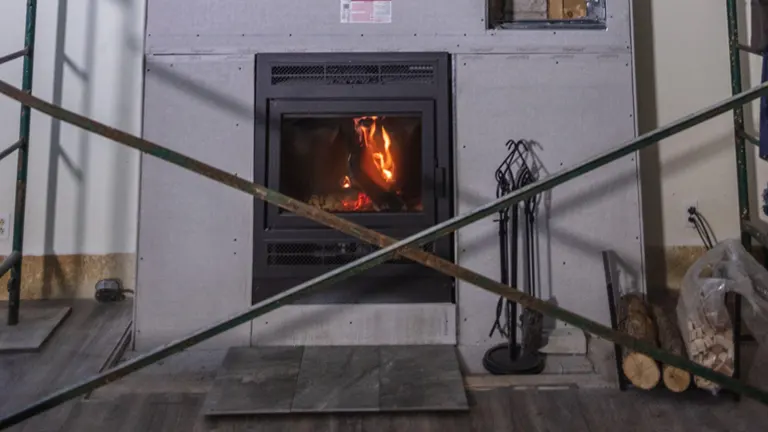
When you hire a certified professional, they come equipped with a thorough knowledge of all the rules, codes, and best practices to install your stove. They will ensure that the stove adheres to any local building codes and regulations, making sure you won’t face any unexpected legal troubles or fines in the future. More than that, these professionals have the training to ensure that the stove is not just correctly installed, but that it will also operate at its best, delivering optimal heat efficiently.
The spot you choose for your stove in your home is equally crucial. This isn’t just about aesthetics or convenience; it’s about safety. It’s imperative to place your wood stove on a surface that can’t and won’t catch fire—surfaces like stone, brick, or metal are ideal. These materials can handle the heat without posing a fire risk.
But beyond the surface it’s on, you also need to think about the space around your stove. It might look cozy nestled between a couch and a bookshelf, but this is a potential fire hazard. To ensure safety, make sure there’s at least a three-foot clearance all around your stove. This space acts as a buffer, greatly reducing the chances of nearby materials—be it a misplaced newspaper or a drape—coming into contact with the stove and igniting. It’s not just about preventing fires, but also about giving the stove space to effectively disperse heat throughout the room.
2. Chimney and Flue Maintenance
When most people think of a wood stove, they envision the comforting flames and feel the warmth it radiates. However, an equally important but less visible part of this system is the chimney and flue. They act as the lungs of your wood stove, allowing it to breathe and function properly. Their condition is paramount not only for the stove’s efficiency but, more crucially, for the safety of your home.
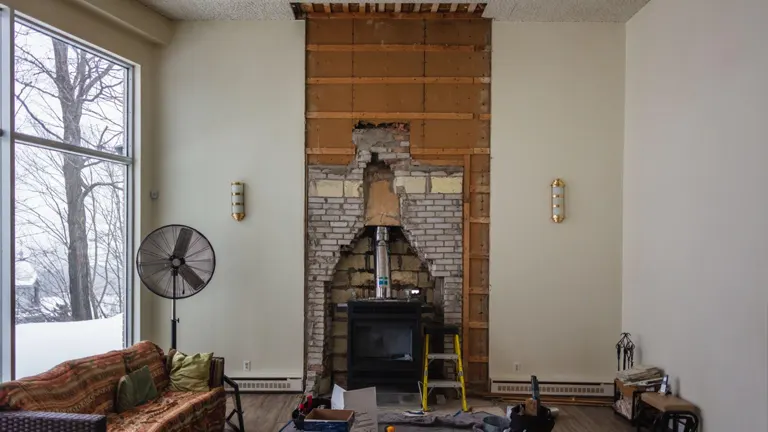
As wood burns in your stove, it releases various gases and particles. One of these by-products is creosote—a sticky, tar-like substance. Over time, as these gases rise and cool down in the chimney, creosote starts to deposit and build up along the walls of the chimney. The danger with creosote is its highly flammable nature. Too much accumulation, and you risk having a chimney fire—a situation where the creosote itself ignites, leading to an intense, hard-to-control blaze.
The good news is that this risk can be effectively managed. By committing to an annual chimney inspection and cleaning, you ensure that creosote build-up doesn’t reach dangerous levels. Trained professionals will not only remove creosote but also check for any damage or blockages in your chimney that might impede proper ventilation or pose other risks.
Speaking of blockages, nature itself can sometimes be an adversary to your chimney’s functionality. Leaves, twigs, rainwater, and even animals like birds or squirrels can find their way into an unprotected chimney, causing obstructions. This is where a chimney cap comes into play. This seemingly simple addition acts as a protective shield, preventing external elements from entering your chimney. With a cap in place, you minimize the chances of unexpected blockages, ensuring that smoke and gases from the wood stove can exit your home unhindered.
3. Operational Precautions
Using a wood stove can be a delightful experience, reminiscent of simpler times and brimming with the ambiance only a live fire can bring. However, as with any fire-based appliance, there’s a right way to use it to ensure both optimal performance and safety.
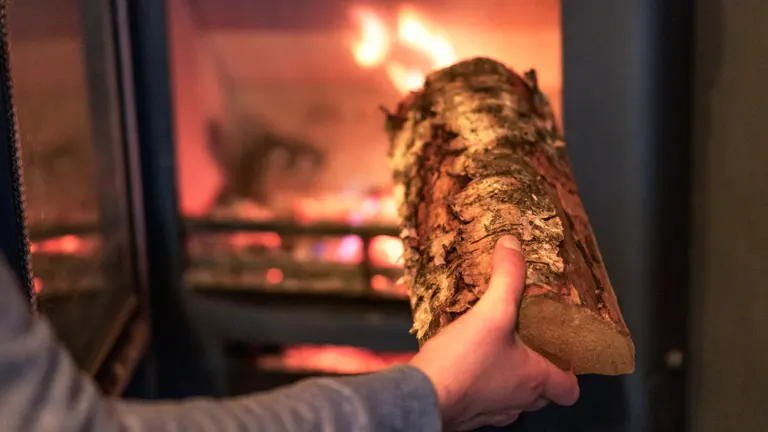
One of the most foundational steps in ensuring efficient and safe wood stove operation is the type of wood you choose to burn. Always lean towards dry, seasoned wood. Why? Well, seasoned wood, having been dried for a considerable time (usually six months to a year), contains much less moisture than fresh-cut wood. This means it burns hotter and more efficiently. On the other hand, wet or green wood tends to smolder and produce more smoke, leading to increased creosote formation—a major culprit in chimney fires, as mentioned earlier.
While it might be tempting, especially on particularly cold nights, to pack the wood stove full to the brim, this is a practice best avoided. Overloading the stove isn’t a guarantee of more warmth. Instead, it can cause the stove to overheat, which not only stresses and damages the stove and chimney but also significantly raises the risk of a chimney fire. An overly full stove also struggles with efficient combustion, leading to more smoke and creosote.
Lastly, let’s discuss the stove door. It might seem like a small detail, but ensuring the door is securely latched is crucial. An unlatched or ajar door can lead to multiple issues. First, it allows for the possibility of sparks or embers escaping, which can lead to accidental fires. Additionally, an open door can draw in excessive oxygen, which can cause the fire to burn unpredictably and even result in sudden and dangerous flare-ups.
4. Safety Equipment
A wood stove, when used with care and attention, can be an excellent source of warmth and ambiance for your home. However, as with all equipment, especially those that involve fire, being prepared for any potential hiccups or emergencies is a must. This is where the right safety equipment comes into play.
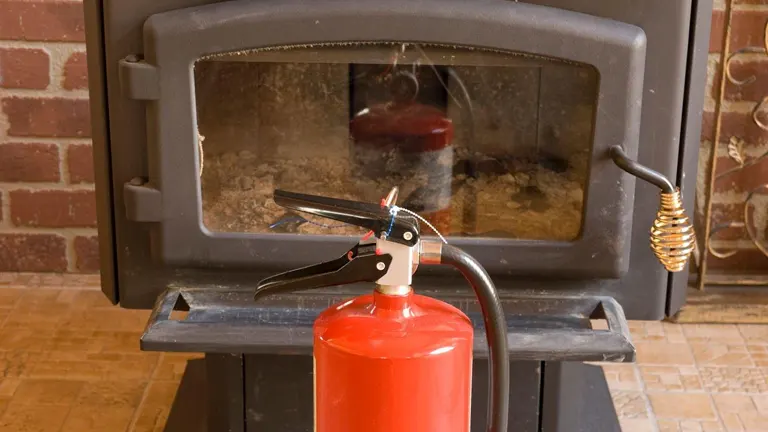
Smoke and carbon monoxide detectors are essential allies in ensuring your and your family’s safety. Why? Because these silent guardians continuously monitor the air in your home. While smoke detectors alert you to the presence of smoke (often before a fire becomes visibly noticeable), carbon monoxide detectors are there to warn you of this invisible, odorless, but very dangerous gas that can be produced by incomplete combustion in wood stoves. Having these detectors installed not only near your stove but also throughout your home ensures that you’re promptly alerted to potential dangers, giving you precious time to act.
Now, let’s talk about an unsung hero: the fire extinguisher. While we all hope never to need it, having a class-A fire extinguisher nearby can make a significant difference in the event of an unexpected fire. This particular class is designed to combat ordinary combustible materials like wood, paper, and cloth—the kind of materials commonly found around homes. But, it’s not enough to merely have a fire extinguisher; it’s equally important that everyone in the household knows how to use it. A quick response can prevent a small mishap from turning into a major catastrophe. Consider having a family session where everyone learns the basics of operating the extinguisher, or even attending a local fire safety course together.
5. Keep the Area Clear
A wood stove, with its inviting warmth and charming glow, naturally becomes a focal point in any room. While it’s tempting to arrange furniture close by or hang decorative items around it for added ambiance, safety must be the priority. How you manage the space around your wood stove plays a significant role in preventing accidents and ensuring a hazard-free environment.
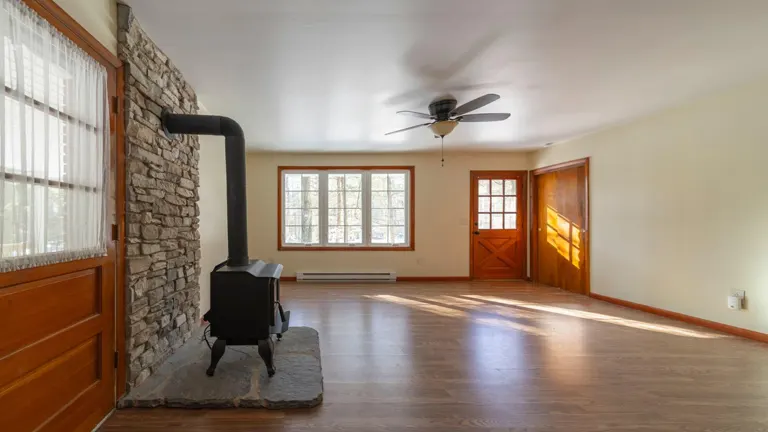
Everyday household items, such as furniture, curtains, rugs, and even magazines or books, can pose a danger if placed too close to the stove. These items can easily catch fire from a stray spark or simply from the intense heat radiating from the stove. As a rule of thumb, maintaining a clear zone of at least three feet around the stove helps reduce the risk of inadvertent ignition. This buffer ensures that even if a spark were to escape or the stove becomes exceedingly hot, there’s a minimal chance of any nearby items catching fire.
Ash removal is another aspect of keeping the stove’s surroundings safe. Over time, as you burn wood, ashes will accumulate in the bottom of the stove. While it might seem like a mere waste, these ashes can be deceivingly dangerous. Even if they appear cold or have been sitting for days, there can be hidden pockets of heat within them. Transferring ashes to a metal container is a wise choice, as metal won’t catch fire. Ensure the container has a tight-fitting lid to contain any potential sparks or embers. When deciding where to store this container, always choose a spot away from your home or any flammable structures. This way, even if the ashes were to reignite, they would do so safely away from anything that could lead to a larger fire.
6. Safety with Children and Pets
Wood stoves undeniably captivate attention, emitting warmth, and a mesmerizing flame dance. However, their appeal isn’t limited to adults. Children, with their innate curiosity, and pets, drawn by the warmth, can be particularly vulnerable to the potential dangers posed by a wood stove. Hence, ensuring their safety requires deliberate actions and guidelines.
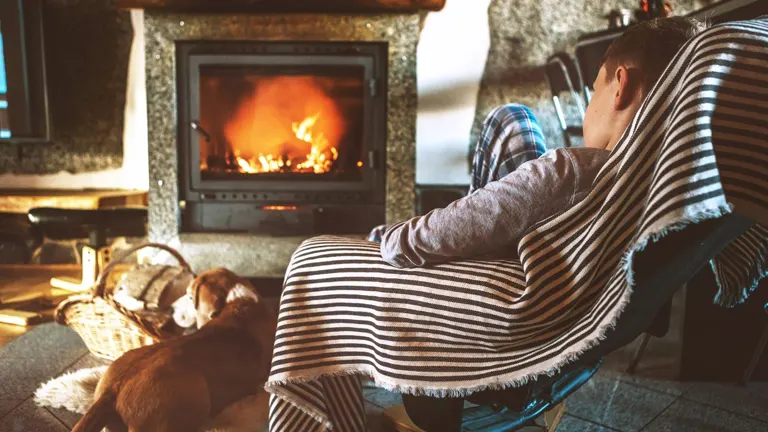
Education forms the foundation of safety for children. It’s never too early to start teaching them about the risks associated with the wood stove. Explain that while the stove provides warmth, its surface is extremely hot and can cause burns. Emphasize the importance of maintaining distance and not touching or playing near the stove. As children grow older and understand better, regular reminders can further instill this sense of caution.
For pets, whether they are cats luxuriating in warm spots or dogs curling up close by, training is paramount. Just as you would teach pet boundaries regarding furniture or certain rooms, it’s essential to instill in them the habit of staying at a safe distance from the stove. Positive reinforcement techniques, such as treats or praise when they maintain distance, can be effective in this training.
To add an extra layer of safety, especially for younger children or particularly curious pets, consider installing safety barriers or gates around the stove. These barriers, often made of metal or heat-resistant materials, can serve as a physical boundary, deterring any accidental touches or close approaches. They can be particularly useful during times when you might be distracted, ensuring that the little ones remain protected.
Lastly, while attending to the stove, be it for adding wood or adjusting settings, exercise caution with your attire. Loose clothing, especially sleeves or scarves, can easily dangle and come in contact with the stove, posing a fire risk. Opting for close-fitting attire or simply being mindful of any loose garments can prevent potential mishaps.
7. Ventilation
When we think of a wood stove, our minds often drift to its warmth and the ambient glow it casts. However, underneath that delightful experience is a process of combustion. Like all combustion processes, a wood stove consumes oxygen and releases gases, making proper ventilation crucial for both safety and efficiency.
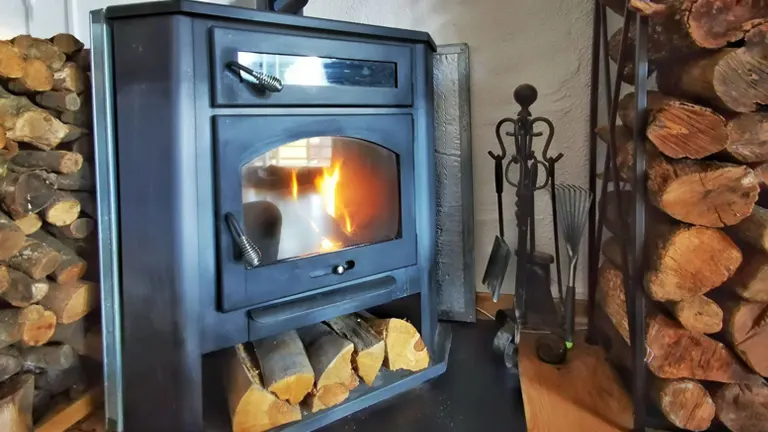
Adequate air circulation ensures that the stove receives enough oxygen to maintain efficient combustion. An oxygen-deprived environment can lead to incomplete burning, producing more smoke and harmful gases like carbon monoxide—a colorless, odorless gas that can be lethal in high concentrations. Proper ventilation ensures that such gases are quickly expelled from the room, maintaining a healthy environment.
Beyond health concerns, an adequately ventilated room can also enhance the performance of your wood stove. Good airflow helps the wood burn hotter and cleaner, producing more heat with less creosote buildup in the chimney.
Depending on the design and requirements of your particular wood stove, simply having an open room might not be sufficient. Some stoves, especially modern, airtight models, might require a dedicated air source to optimize combustion. This could mean leaving a nearby window slightly ajar or even installing specialized ventilation mechanisms that pull fresh air directly into the stove.
To understand the specific ventilation needs of your wood stove, always refer to the manufacturer’s guidelines. Regularly checking the room’s air quality indicators, such as carbon monoxide detectors, can also provide insights into whether your current ventilation setup is adequate.
8. Regular Inspection
The consistent, heartwarming hum of a wood stove, especially during the colder months, can create an illusion of unwavering reliability. However, like all equipment subjected to intense heat and regular use, wood stoves and their accompanying chimneys can experience wear and tear, often unnoticed by the untrained eye. This makes regular inspections an indispensable part of wood stove ownership.
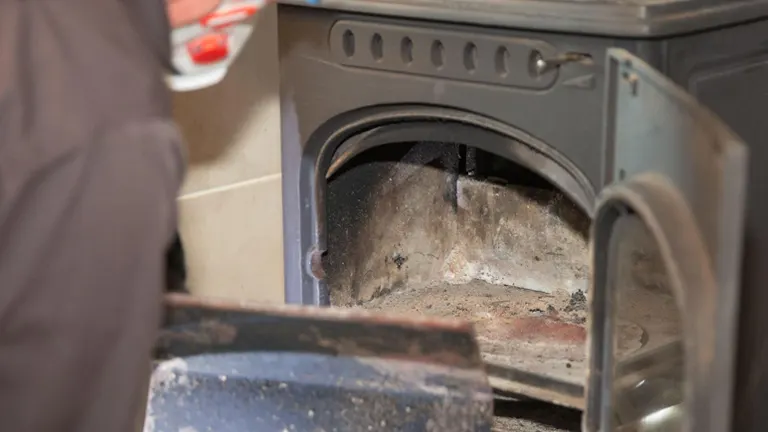
An annual inspection is more than just a cursory glance at the stove. It’s a thorough examination by a professional who is trained to spot subtle signs of deterioration or malfunction. Think of it akin to a medical check-up; you might feel perfectly fine, but a doctor can identify and address potential health issues before they manifest more seriously.
Several elements warrant attention during these inspections. The professional will assess the stove for any cracks, warped metal, or damaged seals, ensuring that the stove’s structural integrity remains uncompromised. The chimney, often the unsung hero in the wood-burning process, also undergoes scrutiny. A build-up of creosote, a tar-like substance resulting from wood combustion, can pose significant fire risks. An inspector will not only identify this accumulation but also recommend when it’s time for a thorough cleaning.
Moreover, the chimney’s overall structure will be checked for any blockages, cracks, or signs of wear that could impact its performance or safety. Ventilation mechanisms, often integrated into modern stoves, will be assessed to ensure they function optimally and provide the stove with the necessary airflow.
By investing in these annual inspections, you’re not just ensuring the longevity of your wood stove and chimney but also fortifying the safety of your household. Unaddressed minor issues can quickly escalate into major problems, often accompanied by higher repair costs or even potential fire hazards.
Conclusion
Wood stoves bring warmth and ambiance to our homes during the frigid winter months. However, it’s our responsibility to ensure they are operated safely. With careful attention to the above guidelines, you can bask in the cozy comfort of your wood stove, confident in its safety throughout the season.
Thank you for taking the time to read through Wood Stove Safety. Your safety and the well-being of your loved ones are paramount, and we hope this article serves as a valuable resource in ensuring a warm and safe environment in your home. We invite you to share your thoughts, experiences, and any additional tips in the comments below. Your input could be beneficial for others in our community. Please don’t hesitate to share this article with friends and family, as spreading knowledge is a step towards a safer community. Once again, thank you for joining us on this important journey, and stay warm and safe!
FAQs
- How safe is a wood stove?
A wood stove, when correctly installed, maintained, and operated, is a safe heating option. Modern stoves are designed with safety features and are built to strict standards. However, their safety largely depends on user practices and regular maintenance. - How can I make my wood-burning stove safer?
- To ensure your wood-burning stove is safer:
- Opt for professional installation to meet local codes and regulations.
- Use only dry, seasoned wood to reduce creosote buildup.
- Maintain a clear space around the stove, free of combustibles.
- Regularly inspect and clean the chimney to prevent chimney fires.
- Install smoke and carbon monoxide detectors nearby.
- Educate all household members about the stove’s operation and safety precautions.
- Is it safe to sleep in a room with a wood-burning stove?
Yes, it’s safe to sleep in a room with a wood-burning stove as long as the stove is properly installed, well-maintained, and there’s adequate ventilation in the room. Ensure smoke and carbon monoxide detectors are installed and operational in the room. - Is it safe to leave the house with a wood stove burning?
It’s not recommended. While many wood stoves can burn for extended periods, there’s always a risk of a drop of wood shifting or an unexpected flare-up. If you must leave the house, ensure the fire is stable, the doors are securely closed, and you won’t be gone for an extended period. - How often should I empty the ashes from my wood stove?
It’s a good practice to empty the ash pan when it’s about one-third full. Excessive ash can clog the air intake, reducing the efficiency of your stove and posing a potential fire hazard. - Can I use any wood on my stove?
No. Only use dry, seasoned wood. Green or wet wood can increase creosote buildup, which is a leading cause of chimney fires. Avoid using treated wood, as it can release harmful fumes. - Is it okay to burn paper logs or other items in my wood stove?
It’s best to avoid burning anything other than seasoned wood in your stove. Some paper logs can be safe, but others may contain chemicals or binders. Always check with the stove manufacturer’s recommendations. - Do wood stoves affect indoor air quality?
While wood stoves provide warmth, they can also emit particles and gasses that can affect indoor air quality. Ensure proper ventilation, use seasoned wood, and maintain your stove to minimize these effects. - How do I know if my chimney needs cleaning?
If you notice a decrease in your stove’s efficiency, a strong smoky smell, or a buildup of soot at the fireplace base, it might be time for a chimney clean. However, an annual inspection is always recommended, even if these signs aren’t evident. - Can I install a wood stove in my mobile home?
Yes, but it must be a stove specifically designed and approved for use in mobile homes. Ensure you follow all manufacturer instructions and local regulations.
We hope this guide helps you keep your winter cozy and safe with your wood stove. Got any tips or experiences to share about wood stove safety? Drop a comment below—we’d love to hear how you keep warm and secure during the chilly months!

David Murray
Forestry AuthorI'm David Murry, a forestry equipment specialist with a focus on chainsaw operation. With over 13 years of experience, I've honed my skills in operating and maintaining a wide range of machinery, from chainsaws to log splitters. My passion for the outdoors and commitment to sustainable forestry drive my work, which emphasizes safety, efficiency, and staying updated with industry advancements. Additionally, I'm dedicated to sharing my expertise and promoting environmental awareness within the forestry community.












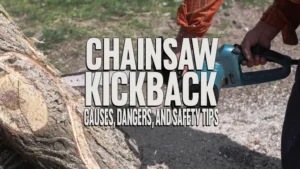
Leave your comment